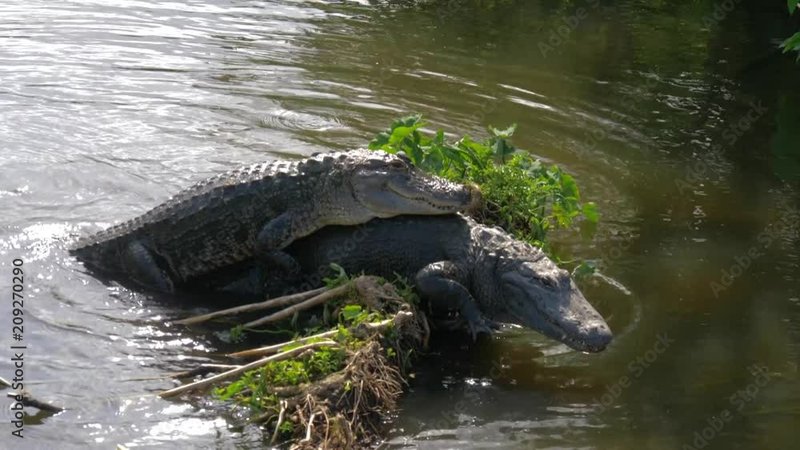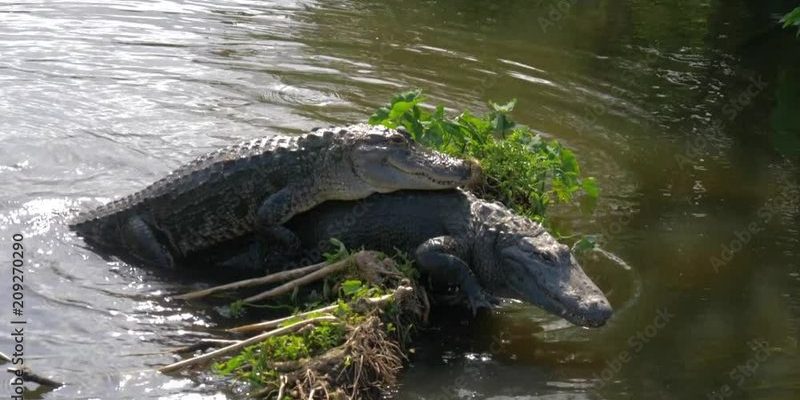
You might be wondering what sets alligators apart in the breeding department. Well, for starters, they have some pretty interesting courtship displays and nesting practices. In this article, we’ll dive deep into how these ancient reptiles reproduce, how they care for their young, and what role environmental factors play in their breeding success. So grab your favorite drink, and let’s chat about these incredible reptiles!
The Courtship Dance: How Alligators Choose Their Mates
Alligator courtship is like a complex dance, filled with unique sounds and movements. During the breeding season, which typically runs from April to June, male alligators make loud, low-frequency vocalizations known as “bellowing.” This booming call can travel far and wide, signaling their presence to potential mates. Think of it as a concert—each male is trying to outdo the others to attract a female.
Once a female approaches, the male will engage in a series of displays to woo her. He might swim in circles or create water splashes with his tail. Here’s the thing: these displays aren’t just showy; they indicate the male’s strength and fitness, showcasing his ability to provide for a partner and future offspring. If the female is impressed, she’ll join him in the water, and they’ll engage in what looks like synchronized swimming, adding a bit of romance to the mix!
After courtship, mating occurs, usually at the water’s surface, where the act can last several hours. It’s a vital part of their reproductive behavior, and successful copulation is essential for the continuation of the species.
Nesting Season: The Alligator’s Family Planning
After mating, the female alligator is on a mission: it’s time to build a nest. She typically selects a site in or near water, choosing a spot with plenty of vegetation to help camouflage her nest. It’s like designing a house—she’ll gather leaves, mud, and debris to create a mound. You might think of it as a cozy little fortress for her future eggs.
Once the nest is built, the female lays 20 to 50 eggs, depending on her size and health. Alligator eggs are about the size of a golf ball and are white, leathery, and fragile. After laying the eggs, she’ll cover them with vegetation to keep them warm and hidden from predators. It’s a pretty incredible example of parental care from a reptile, showing how invested these creatures are in their offspring’s success.
The temperature of the nest is crucial for the development of the eggs. Here’s a fun fact: the temperature determines the sex of the hatchlings! Warmer temperatures generally produce males, while cooler temperatures create females. How cool is that? It’s like nature has its own built-in system for balancing the sexes in the population.
Incubation and Hatching: The Waiting Game
After about 65 to 70 days, the eggs begin to hatch, and this is where the excitement ramps up! As hatchlings start to break free, they emit soft calls that signal their mother. This part of the alligator’s reproductive behavior is fascinating! The mother stands guard, and if she senses trouble, she’ll protect the hatchlings fiercely.
The hatchlings are tiny but feisty, measuring around 7 to 10 inches long. Once they break free, they rely on their mother for guidance and protection. While she won’t babysit them 24/7, she actively participates in their early life. Here’s where it gets really interesting: a mother alligator will often carry her young in her mouth to the water. Imagine a proud mom showcasing her little ones!
The early stages of life are perilous for these young alligators. Many don’t survive to adulthood due to predators, including birds, other reptiles, and even larger alligators. This makes the mother’s protective role all the more important, emphasizing the dedication that goes into the survival of the next generation.
Parental Care: Alligator Moms vs. Other Reptiles
Alligator parental care sets them apart from many other reptiles. While some reptiles lay eggs and leave them entirely, alligator mothers are uniquely attentive. They often stay near their nests and provide a safe environment for their hatchlings, a rare behavior within the reptile world.
This protective nature helps ensure that more young survive to adulthood. Alligators have also been observed providing protection and guidance to their young well after they hatch, which isn’t common among their reptilian cousins. Imagine a mother guiding her little ones through the marsh, teaching them how to hunt and evade predators.
The bond between mother and offspring is crucial—it’s like having a built-in safety net. This nurturing aspect of alligator life adds depth to their behavior and highlights their social structures, which can be quite surprising given their tough exterior.
Environmental Factors Affecting Reproductive Success
Just like any other living creature, alligators’ reproductive success hinges on their environment. Factors such as temperature, habitat availability, and food resources play a significant role in their breeding cycle. For instance, if the weather is unseasonably cold, it can affect nesting temperatures and ultimately influence the sex ratio of hatchlings.
Moreover, habitat destruction, pollution, and climate change are major threats to alligator populations. These factors can reduce suitable nesting sites and impact food availability, making it harder for females to raise their young. You might be wondering about conservation efforts—many organizations are working hard to preserve these ancient reptiles’ habitats to ensure they thrive for generations to come.
Understanding these environmental influences is crucial for protecting alligator populations. By maintaining healthy ecosystems, we can support their breeding behaviors and help safeguard these incredible creatures.
The breeding and reproductive behavior of alligators is as intricate as it is fascinating. From their unique courtship rituals to the attentive care of mothers, these ancient reptiles showcase behaviors that help them adapt and thrive in their environments. But as we’ve seen, their future depends on a healthy ecosystem.
By understanding the complexities of their reproduction and what influences their success, we can appreciate the vital role alligators play in the ecosystem. Supporting conservation efforts and being mindful of the environment can help ensure that these remarkable creatures continue to thrive. So, the next time you see an alligator basking in the sun, remember there’s a whole lot more going on beneath the surface!

